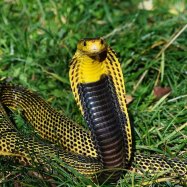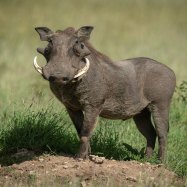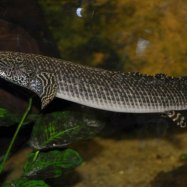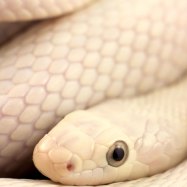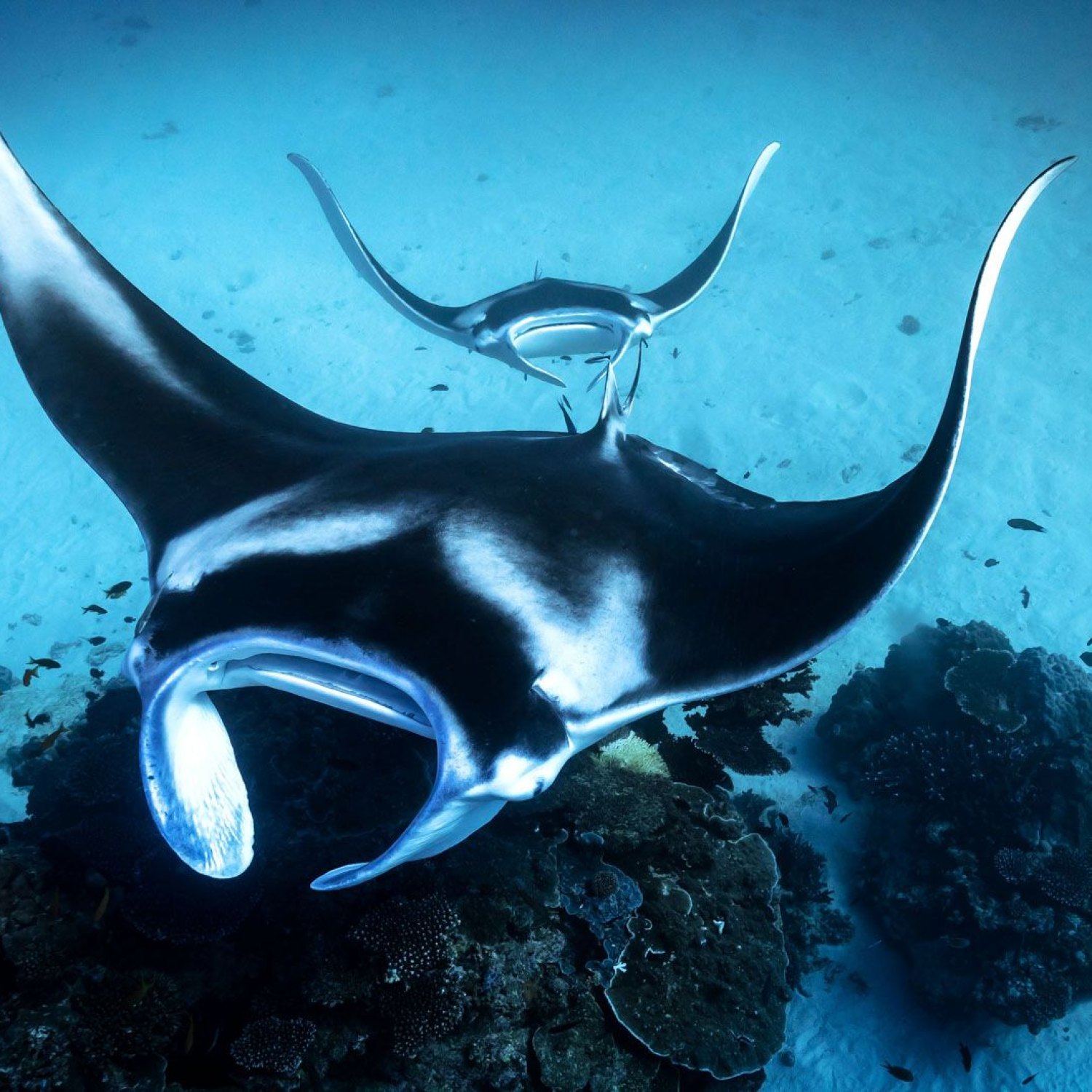
Manta Ray
Up to 7 meters (23 feet)
Manta rays, found in oceans around the world, are among the largest fish species with an average length of 7 meters. Their unique body shape and triangular pectoral fins make them graceful swimmers. Belonging to the Myliobatidae family, these gentle giants are a must-see for any ocean enthusiast. #MantaRay #MarineLife #OceanAdventures
Animal Details Summary:
Common Name: Manta Ray
Kingdom: Animalia
Habitat: Marine
The Mysterious Giant: Exploring the World of Manta Rays
Welcome to the boundless world of the oceans where life thrives in all its glory. While there are countless creatures inhabiting the depths of the sea, there is one majestic creature that stands out – the Manta Ray. With its graceful movements and impressive size, the Manta Ray has captured the imagination of humans for centuries. In this article, we will unravel the captivating world of Manta Rays – their mesmerizing appearance, fascinating behavior, and their vital role in the marine ecosystem Manta Ray.The Basics: Taxonomy and Classification
Let's begin by getting acquainted with the scientific name of this majestic creature: Manta birostris. Also known as the Manta Ray or simply Manta, this amazing animal belongs to the Animalia kingdom and the Chordata phylum. It is classified under the Class Chondrichthyes, which comprises cartilaginous fish, such as sharks and rays. Within this class, the Manta Ray belongs to the Order Myliobatiformes and the Family Myliobatidae.Appearance and Physical Characteristics
The Manta Ray is a true giant of the ocean, with a body shape that sets it apart from other creatures. It has a large, flat body with broad, triangular pectoral fins that extend outwards like wings. These fins are its main propellers, allowing it to glide gracefully through the water. The Manta Ray can grow up to an impressive length of 7 meters (23 feet) and can weigh up to 1,350 kg (2,980 lbs).Their distinctive appearance is further enhanced by their coloration – with the upper surface being black, blue, or gray, and the underside being white Margay. This coloring is not just for aesthetic appeal; it plays a vital role in their survival. The dark color on the upper surface helps them blend in with the deep waters when looked at from above, while the white underside helps them camouflage against the bright ocean surface when viewed from below.
Habitat and Distribution
The Manta Ray is a marine creature, found in the tropical and subtropical waters worldwide. They can be found in all major oceans, making them a truly global species. Their exact country of origin is unknown, but they are commonly found in the waters of Indonesia, the Maldives, and the Caribbean.Feeding Habits
One of the most fascinating features of the Manta Ray is its feeding method. As a filter feeder, it consumes large amounts of tiny organisms, such as plankton, krill, and small fish. This method of feeding is made possible by its unique body shape, which allows water and plankton to pass through the gills while keeping out larger debris and predators.Behavior and Social Interactions
Despite its size, the Manta Ray is a gentle creature with a calm demeanor. They are predominantly solitary creatures, although they can sometimes be seen swimming in pairs or small groups. Interestingly, they also have a friendly relationship with other marine animals, such as certain species of fish and even sharks. This behavior is known as "manta trains," where other animals can be seen swimming alongside the Manta Ray, gaining protection from predators in the process.The Role of Manta Rays in the Marine Ecosystem
Manta Rays have a significant impact on the ocean's delicate ecosystem. As filter feeders, they play a crucial role in maintaining the balance of plankton populations, which are essential for the survival of smaller aquatic animals. They also provide a food source for larger ocean predators, such as sharks. Additionally, Manta Rays are known to help prevent the growth of algae on coral reefs, which is important for the health of these vital ecosystems.Threats and Conservation Efforts
Despite their crucial role in the marine ecosystem, Manta Rays face numerous threats to their survival. One of the biggest threats is bycatch – getting accidentally caught in fishing nets meant for other species. This often leads to their death or serious injuries. Habitat destruction, pollution, and overfishing are also significant threats to their survival.To help protect these magnificent creatures, numerous conservation efforts are underway worldwide. Some of these include implementing fishing regulations to reduce bycatch, educating local communities on the importance of Manta Rays, and promoting responsible tourism practices to avoid harming these creatures' natural habitat.
In Conclusion
In conclusion, the Manta Ray is a truly fascinating creature that holds a special place in the vast and diverse world of the oceans. With its graceful movements, unique body shape, and vital role in the marine ecosystem, it is a true marvel of nature. By understanding and appreciating these creatures, we can help ensure their survival and continue to marvel at their mysterious beauty for generations to come.

Manta Ray
Animal Details Manta Ray - Scientific Name: Manta birostris
- Category: Animals M
- Scientific Name: Manta birostris
- Common Name: Manta Ray
- Kingdom: Animalia
- Phylum: Chordata
- Class: Chondrichthyes
- Order: Myliobatiformes
- Family: Myliobatidae
- Habitat: Marine
- Feeding Method: Filter Feeder
- Geographical Distribution: Tropical and subtropical waters worldwide
- Country of Origin: Unknown
- Location: Oceans
- Animal Coloration: Black, blue, or gray on the upper surface and white on the underside
- Body Shape: Large, flat body with triangular pectoral fins
- Length: Up to 7 meters (23 feet)
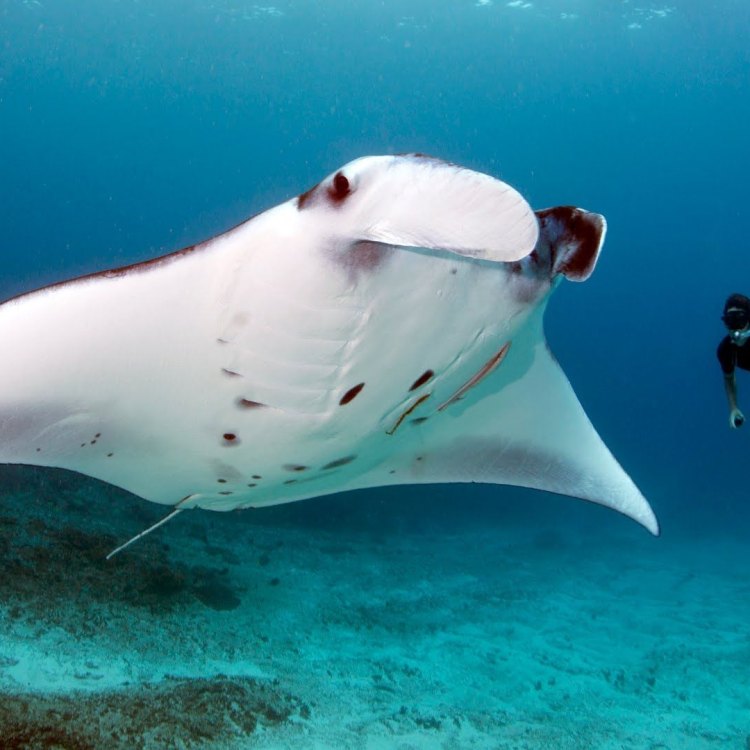
Manta Ray
- Adult Size: Large, can weigh up to 3,000 kilograms (6,600 pounds)
- Average Lifespan: About 40 years
- Reproduction: Ovoviviparous
- Reproductive Behavior: Mating occurs when male mantas follow females and use claspers to transfer sperm
- Sound or Call: No known sounds or calls
- Migration Pattern: Manta rays are known to migrate long distances
- Social Groups: Solitary or in small groups
- Behavior: Gentle and curious, often seen leaping out of the water
- Threats: Illegal fishing, bycatch, habitat loss, climate change
- Conservation Status: Vulnerable
- Impact on Ecosystem: As filter feeders, mantas help regulate populations of planktonic organisms
- Human Use: Tourism, research
- Distinctive Features: Large size, triangular pectoral fins, cephalic lobes
- Interesting Facts: Manta rays have the largest brain of all fish species
- Predator: Orcas and large sharks
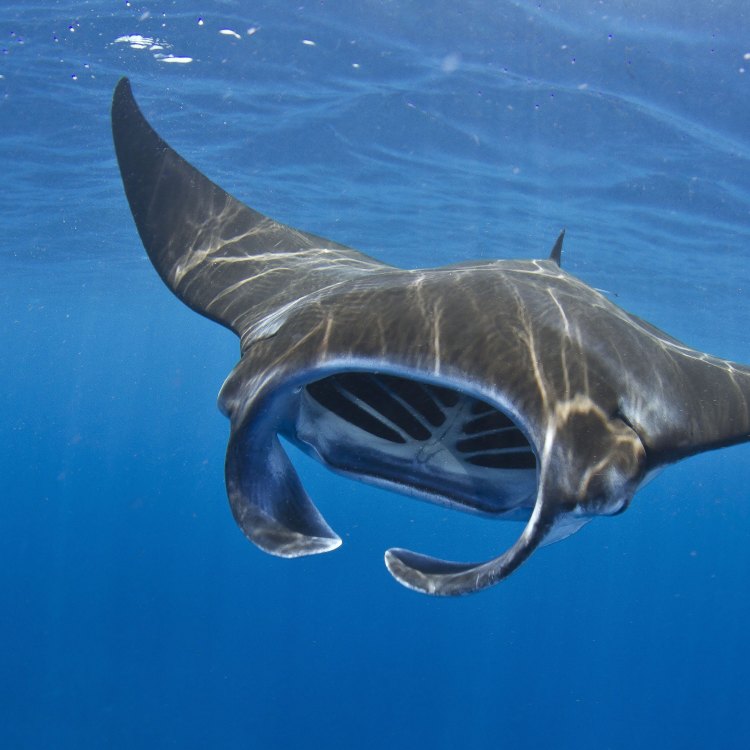
Manta birostris
The Magnificent Manta Ray: An Icon of the Ocean
The manta ray, with its graceful movements and impressive size, has captured the hearts and minds of people for centuries. These majestic creatures have been known by various names, including devilfish and sea devil, but their scientific name, Manta birostris, translates to "blanket ray" in Latin, describing the way they seem to wrap themselves in the ocean's currents. The manta ray is a truly unique and fascinating creature, full of mysteries and wonders that are waiting to be discovered.With an adult size that can reach up to 3,000 kilograms (6,600 pounds), the manta ray is one of the largest fish in the ocean PeaceOfAnimals.Com. They can grow to have a wingspan of up to 9 meters (30 feet), and their average lifespan is about 40 years. These gentle giants can be found in tropical and subtropical waters all over the world, from the Atlantic and Pacific to the Indian Ocean.
One of the most distinctive features of the manta ray is its enormous triangular pectoral fins, which give it a wing-like appearance as it glides effortlessly through the water. These fins, along with their cephalic lobes (the bulging projections on either side of their head), help to funnel plankton into their mouths as they swim. The manta ray is a filter feeder, meaning it consumes large amounts of tiny planktonic organisms by constantly filtering water through its gills.
Reproduction for manta rays is a unique process known as ovoviviparity. This means that the fertilized eggs develop inside the female's body and the pups are then born alive. These eggs are protected inside the mother until they hatch, and then the pups are released into the ocean. This process helps ensure the survival of the species, as it reduces the likelihood of predators targeting the vulnerable eggs Mini Labradoodle.
Mating for manta rays is a delicate dance between the males and females. Male mantas will follow females during their reproductive cycle and use their claspers (specially modified structures on their pelvic fins) to transfer sperm. Female mantas will often mate with multiple males during this time, increasing the chances of successful fertilization.
Although they are large and powerful creatures, manta rays are actually quite gentle and curious. They are often seen leaping out of the water, possibly as a form of play or communication. They are also relatively docile around humans, making them a popular attraction for scuba divers and snorkelers.
Despite their size and grandeur, manta rays face several threats in the wild. These include illegal fishing, habitat loss, and the effects of climate change. Manta rays are often targeted for their gill plates, which are believed to have medicinal properties in some Asian cultures. They are also at risk of being caught as bycatch in fishing nets meant for other species. Habitat loss due to pollution and coastal development can also have a significant impact on their population.
Due to these threats, manta rays are listed as Vulnerable on the IUCN Red List of Threatened Species. While their numbers are difficult to accurately estimate, it is believed that their population has decreased by at least 30% over the past 75 years. This decline is a cause for concern, as manta rays play a crucial role in maintaining the balance of their ecosystem.
As filter feeders, manta rays help regulate the populations of planktonic organisms, which are a vital food source for many other species such as whales, sharks, and dolphins. A decline in the manta ray population could have a ripple effect on the entire food chain, impacting the health and diversity of the ocean.
Despite these challenges, there are efforts being made to protect and conserve the manta ray. For example, many countries have implemented laws to prohibit hunting and trading of manta rays, and some have even established protected areas for their conservation. Conservation organizations also work to raise awareness about the importance of manta rays and the threats they face.
Aside from their ecological importance, manta rays also have significant value to humans. With their gentle nature and impressive size, they have become a popular attraction for tourism, generating income for many local communities. Researchers also study manta rays to learn more about their behavior, population dynamics, and migratory patterns, which can help inform conservation efforts.
Speaking of migration, manta rays are known to travel long distances across the world's oceans. While their exact routes and reasons for migration are not fully understood, it is believed that they follow food sources and favorable water temperatures. In some places, large aggregations of manta rays can be seen during specific times of the year, creating a spectacular sight for those lucky enough to witness it.
Despite their significant size and seemingly invincible appearance, manta rays do have natural predators. Killer whales, also known as orcas, are known to prey on manta rays, using their intelligence, speed, and strength to take down these large creatures. Some large shark species, such as great white sharks and tiger sharks, may also pose a threat to manta rays.
Finally, here's an interesting fact about manta rays that may surprise you. They have the largest brain of all fish species, relative to their size. This may explain their intelligent and curious behavior, as well as their ability to navigate long distances and communicate with one another.
In conclusion, the manta ray is a truly remarkable creature, with its impressive size, unique features, and important role in the marine ecosystem. But with the increasing threat of human activities and climate change, their population is at risk. It is crucial that we continue to work towards their conservation and protection to ensure that these gentle giants will continue to thrive for future generations to admire and appreciate. So the next time you catch a glimpse of a manta ray in the ocean, remember how lucky you are to witness this magnificent creature in all its glory.
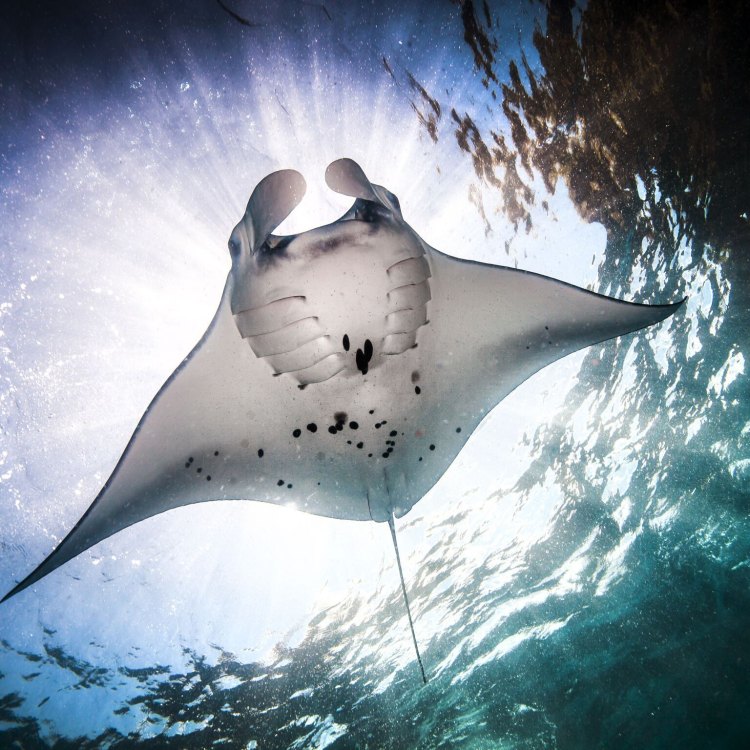
The Mysterious Giant: Exploring the World of Manta Rays
Disclaimer: The content provided is for informational purposes only. We cannot guarantee the accuracy of the information on this page 100%. All information provided here may change without prior notice.





